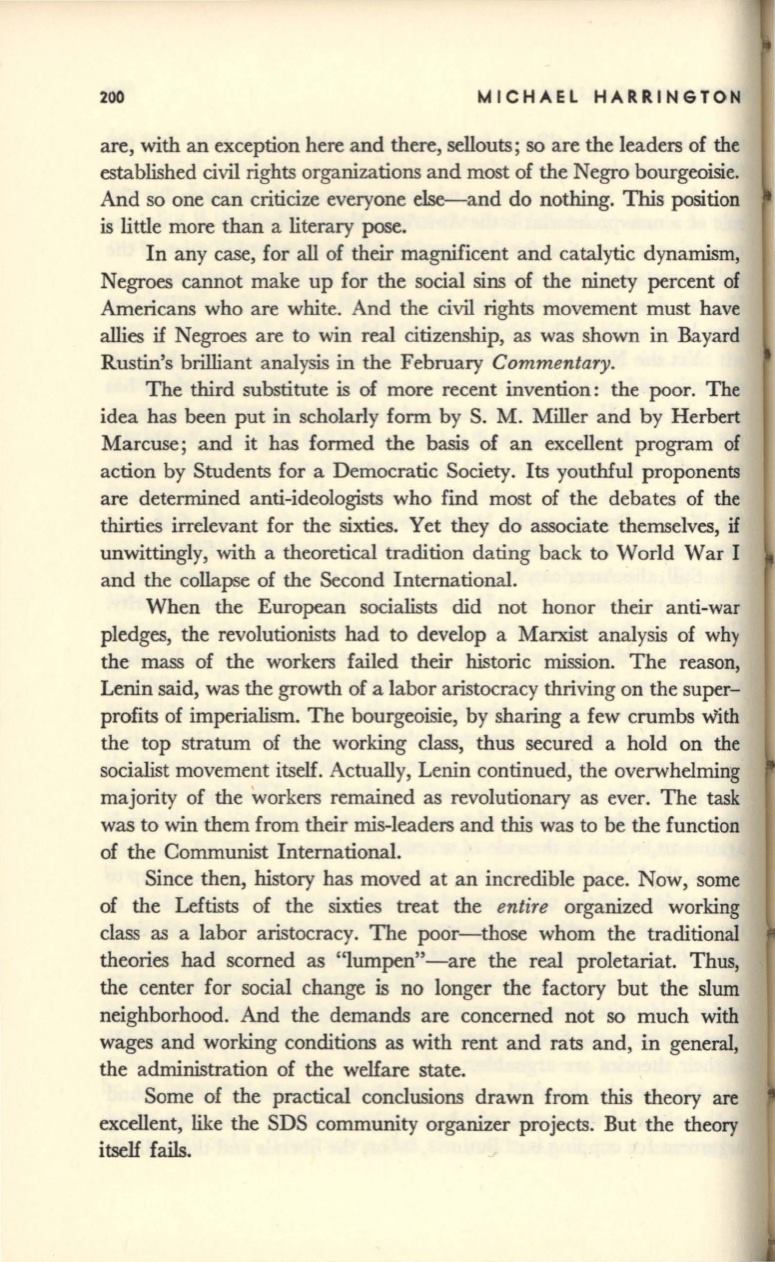
200
MICHAEL HARRINGTON
are, with an exception here and there, sellouts; so are the leaders of the
established civil rights organizations and most of the Negro bourgeoisie.
And so one can criticize everyone else-and do nothing. This position
is little more than a literary pose.
In any case, for all of their magnificent and catalytic dynamism,
Negroes cannot make up for the social sins of the ninety percent of
Americans who are white. And the civil rights movement must have
allies
if
Negroes are to win real citizenship, as was shown in Bayard
Rustin's brilliant analysis in the February
Commentary.
The third substitute
is
of more recent invention: the poor. The
idea has been put in scholarly form by S. M. Miller and by Herbert
Marcuse; and it has formed the basis of an excellent program of
action by Students for a Democratic Society. Its youthful proponents
are determined anti-ideologists who find most of the debates of the
thirties irrelevant for the sixties. Yet they do associate themselves,
if
unwittingly, with a theoretical tradition dating back to World War
I
and the collapse of the Second International.
When the European socialists did not honor their anti-war
pledges, the revolutionists had to develop a Marxist analysis of why
the mass of the workers failed their historic mission. The reason,
Lenin said, was the growth of a labor aristocracy thriving on the super–
profits of imperialism. The bourgeoisie, by sharing a few crumbs with
the top stratum of the working class, thus secured a hold on the
socialist movement itself. Actually, Lenin continued, the overwhelming
majority of the workers remained as revolutionary as ever. The task
was to win them from their mis-leaders and this was to be the function
of the Communist International.
Since then, history has moved at an incredible pace. Now, some
of the Leftists of the sixties treat the
entire
organized working
class as a labor aristocracy. The poor-those whom the traditional
theories had scorned as "lumpen"-are the real proletariat. Thus,
the center for social change
is
no longer the factory but the
slum
neighborhood. And the demands are concerned not so much with
wages and working conditions as with rent and rats and, in general,
the administration of the welfare state.
Some of the practical conclusions drawn from this theory are
excellent, like the SDS community organizer projects. But the theory
itself fails.


